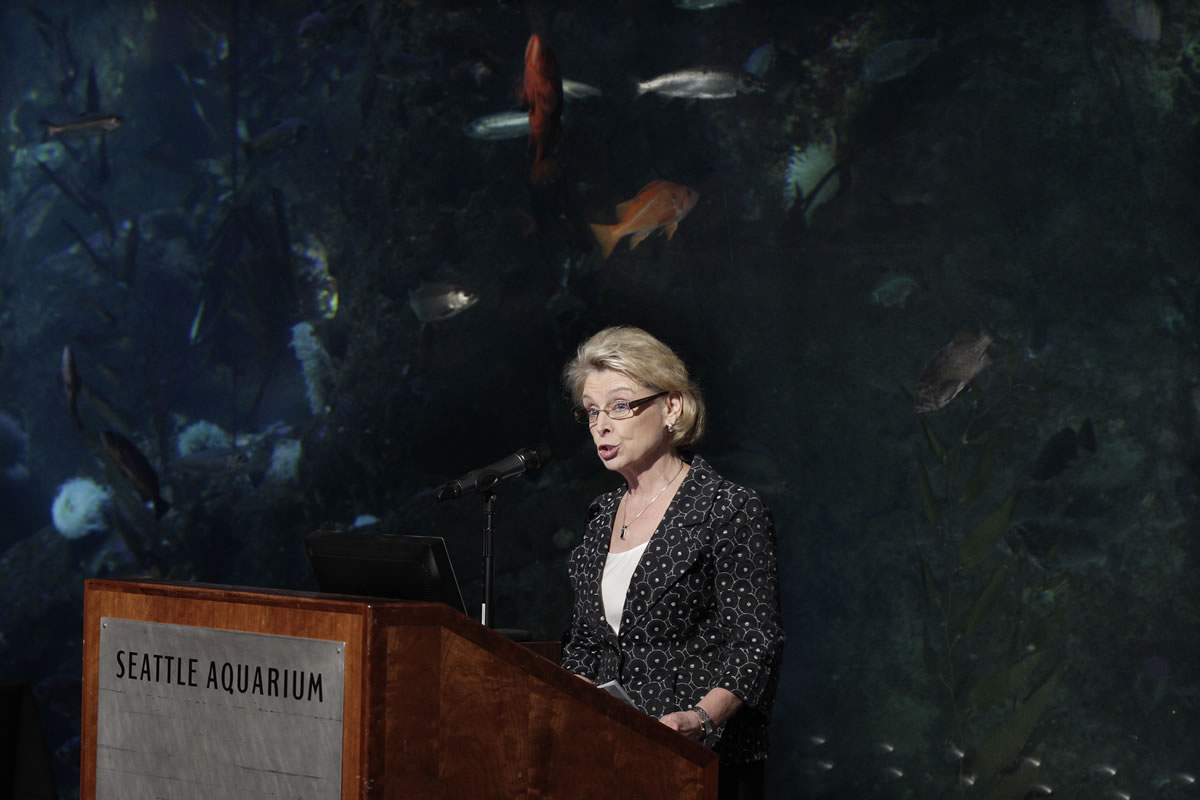SEATTLE — Rising acidity levels in the oceans pose a serious threat to shellfish and other marine life, and tackling that problem in Washington state will require reducing carbon dioxide emissions, keeping polluted runoff out of marine waters, and increasing monitoring at hatcheries, a group of experts said Tuesday.
The panel of scientists and policy experts convened by Gov. Chris Gregoire recommended dozens of actions to combat changes to ocean chemistry detected several years ago when oyster larvae in Pacific Northwest hatcheries began dying in large numbers.
“There are ominous signals coming from the ecosystem on this issue, as ominous as anything coming from climate change,” said Jay Manning, former state ecology director who headed the panel with former Environmental Protection Agency administrator Bill Ruckelshaus.
Gregoire, who formed the group as part of a state and federal initiative to help protect the state’s $270 million shellfish industry, signed an executive order Tuesday directing the Department of Ecology to work on the problem. She also announced $3.3 million in funding for some actions in her proposed budget.
However, with Gregoire leaving office in January, it’s unclear where the state would find money to pay for the ideas. The state faces a projected $900 million deficit for the next two-year budget ending in mid-2015.
However, the problem known as ocean acidification also is a concern for Gov.-elect Jay Inslee, said his spokesman Sterling Clifford. Inslee is a Democrat.
“He’s pleased with the executive order today, and he’s looking forward to continuing to address carbon pollution and ocean acidification,” Clifford said.
Clifford declined to make budget commitments when asked if Inslee would include money for ocean acidification projects in his budget.
Jane Lubchenco, administrator of the National Oceanic and Atmospheric Administration, said the report draws attention to a problem that exists internationally but has hit particularly hard in the state of Washington.
Acidification is caused when oceans absorb human-generated carbon dioxide, mostly from the atmosphere and also from nutrient runoff and other sources.
Studies have shown that corrosive water has a dramatic effect on oysters, clams, and corals, and could potentially affect the broader marine food web.
Washington state is the nation’s top producer of farmed shellfish. The problem affects the industry along with consumers and anyone who has ever dug up razor clams or picked oysters on the coast, Manning said.
The panel, the first of its kind for a state, recommended 42 wide-ranging actions. It cited 18 priorities, ranging from finding innovative techniques such as seaweed farming to capture and remove carbon to reducing greenhouse gas emissions.
The state has already taken action to reduce carbon emissions, including adopting a renewable energy standard and negotiating an agreement to shut down the state’s only coal-fired power plant. But the panel said more could be done, such as adopting a low-carbon fuel standard.
Gregoire also proposed a new center for ocean acidification at the University of Washington to be paid for by existing taxes collected on hazardous substances and revenue from leases on state-owned aquatic lands.
Ocean acidification likely affects marine organisms to varying degrees, but research has shown those using the mineral calcium carbonate to make shells, skeletons or other body parts are more sensitive to changing sea chemistry. The organisms include oysters, clams, scallops, mussels and coral.
In February, scientists in Oregon found evidence that higher levels of carbon dioxide in the Pacific Ocean were responsible for the failure of oyster larvae to survive in 2005 at Whiskey Creek Shellfish Hatchery on Netarts Bay.
The panel said Washington’s waters are particularly vulnerable to ocean acidification because seasonal ocean upwelling brings water rich in carbon dioxide — and more acidic — up from the deep ocean toward the continental shelf.



